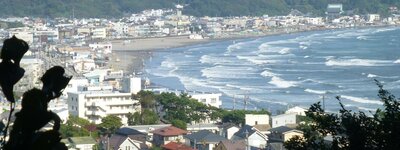I made a series of four portraits based on a scene from the 2015 movie “海街 diary” (umimachi diary) by Hirokazu Kore-Eda, called “Our Little Sister” in English. The movie is based on a manga from 2007 of the same name by Akimi Yoshida (吉田秋生) [1]. The title means “diary of a seaside town”. The seaside town in the story is Kamakura (鎌倉市), an ancient capital of Japan on the Pacific coast. The banner picture shows a view over the town which I took in 2018.
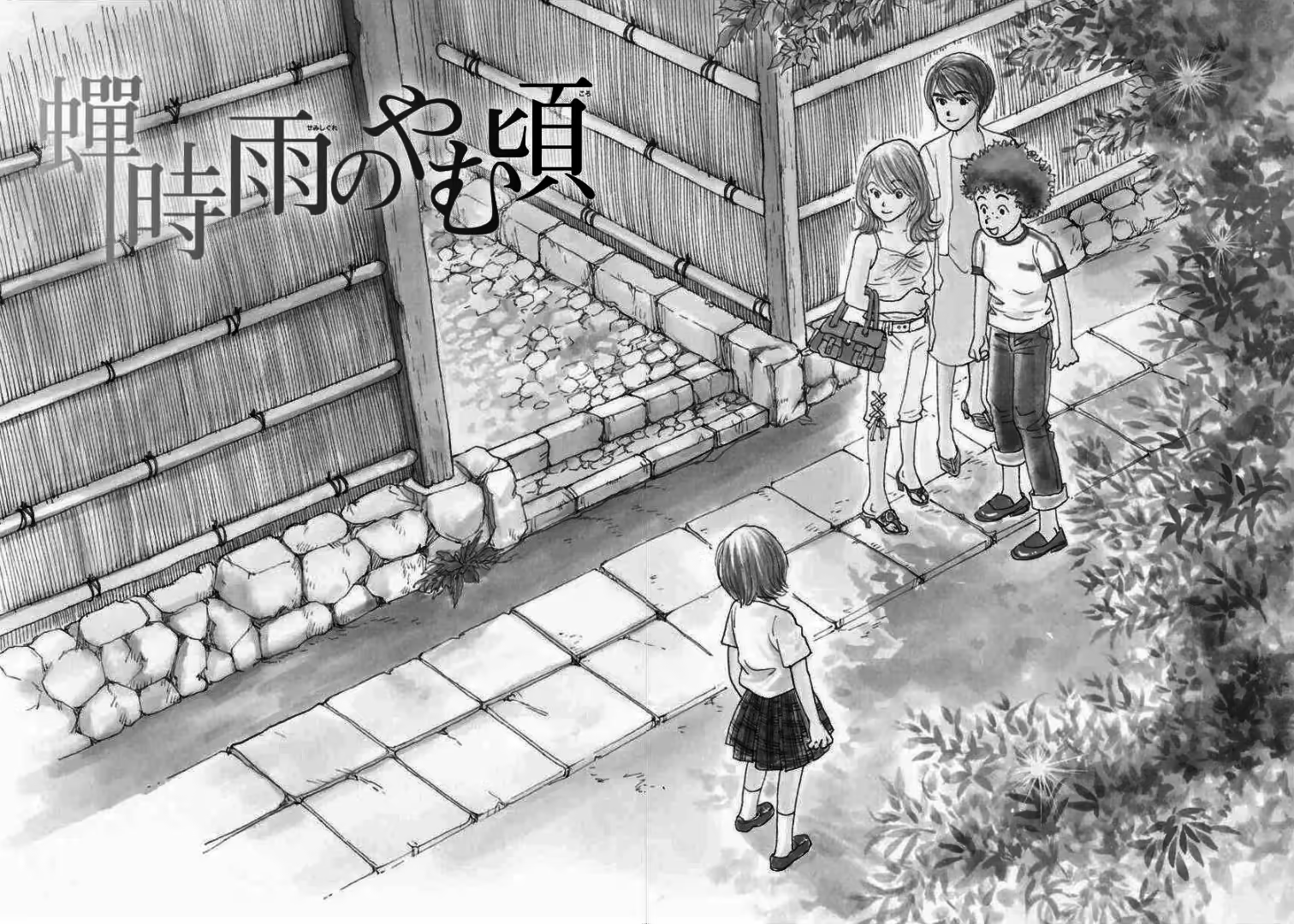
The manga and film tell the story of four sisters: after the funeral of their estranged father, the three Koda sisters Sachi, Yoshino and Chika invite their younger half-sister Suzu to come and live with them at the old family home they share in Kamakura. The film covers a year in Suzu’s life and the portraits are from a scene in summer at the end of that year.
The film is not so much about the sisters as about how things change with the passage of time, and that passage of time is beautifully suggested in the manga as well as in the movie through subtle references to the seasons. The story starts out in late summer (late August or early September) with the sound of the cicadas: the manga’s first chapter is called semijigure no yamu koro (蝉時雨のやむ頃) which means “the time when the chorus of the cicadas stops” (semi means cicada and jigure is literally “rain shower”). Suzu moves in with the sisters after the traditional Buddhist 49-day period of mourning (chuin, 中陰) for her father’s death, so by then it is early autumn. A bit later, when she joins the local soccer team, the colourful maple leaves (kouyou, 紅葉) show us it’s late autumn, and later yet the sisters are huddled around the kotatsu (a low table with an electric heater attached underneath) in the deep of winter. Then the cherry blossoms (sakurabana, 桜花) herald spring, and the hydrangeas mark the rainy season (tsuyu, 梅雨). At the end of this, the sisters pick the green plums from the plum tree in the garden to make plum wine, and then summer comes, with the fireworks (hanabi, 花火).
The scene I have chosen for the portraits is when the sisters are having their own fireworks in their garden.
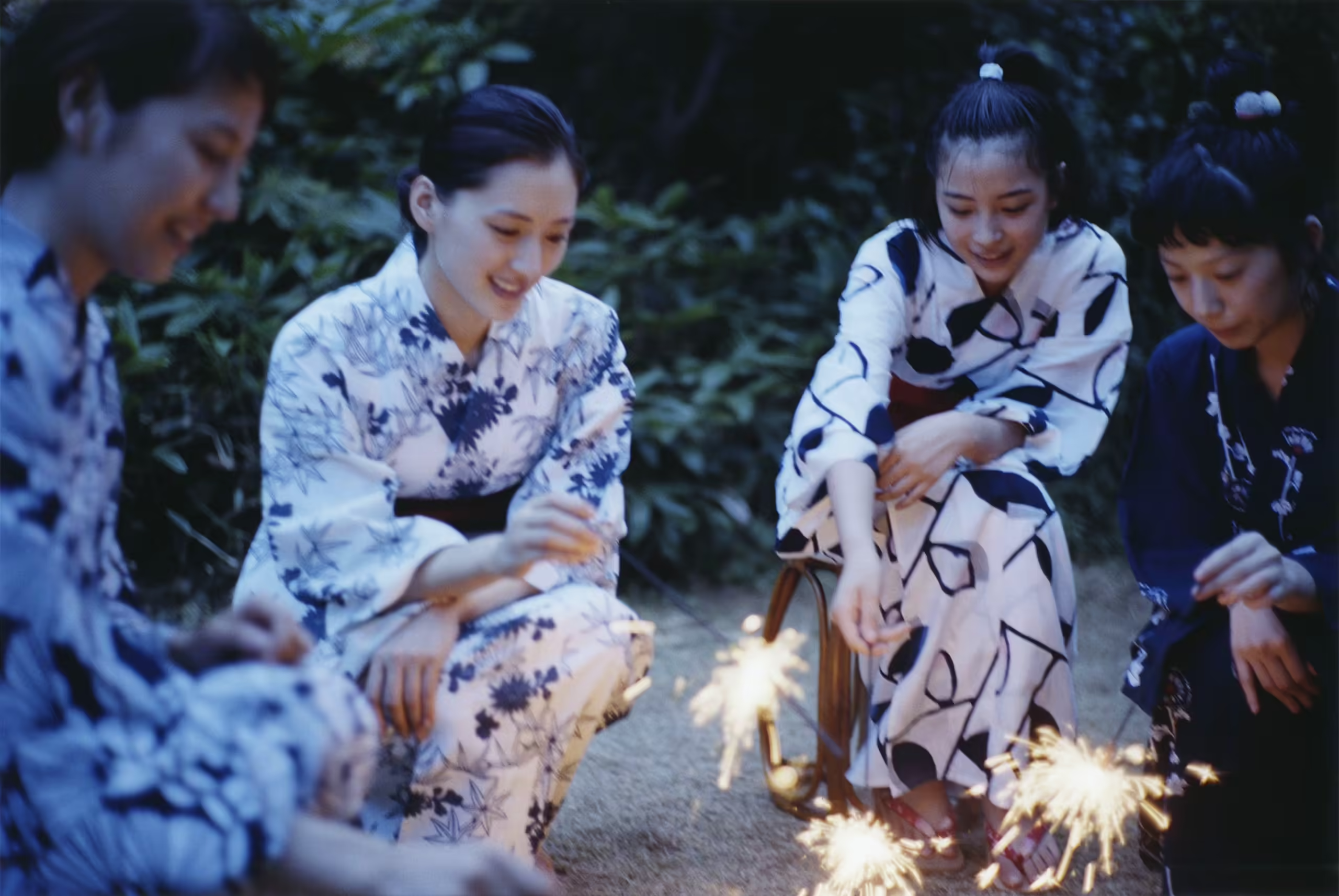
I like it because they are all absorbed in the sparklers; because of the yukatas (summer kimonos) they are wearing for the occasion, which give the scene a timeless quality and provide interesting graphical patterns; and because of the reflection of the light from the sparklers on their faces.
The sparklers are called senkō hanabi (線香花火, literally “incense-stick fireworks”). They date back to the Edo period (17th century) and are quite sophisticated:
“Well manufactured senkō hanabi are renowned for having 5 phases in the course of its life: birth, infancy, youth, middle age, and old age. In the birth phase, the firework composition burns to leave a wire-like cinder. In the infancy phase, the cinder gradually shrinks and produces a fireball that increases in brilliancy. The youth phase then displays large pine needle shaped sparks that project from the surface of the fireball. Next, in the middle age phase, many small sparks are emitted from the fireball. Then finally, energy fades in the old age phase as the sparks die down and become willow-like.” [2].
That same paper [2] makes the following observation on watching senkō hanabi:
“Watching senkō hanabi is like a meditation, mesmerising and calming, allowing thoughts and earthly worries to be temporarily cast aside. Although senkō hanabi only lasts approximately 20 seconds, its brief existence manages to express the sentiment and emotion of an entire life. As the senkō hanabi briefly transitions through each phase, comparisons can accordingly be drawn to the various transitions of one’s own life. The observer is reminded of the rapid change and development in birth and infancy; the vivacious energy of youth; refinement in middle age; and finally, withering in old age. Moreover, the irregular nature of the sparks stresses the randomness and uncertainty of life.”
In my portraits the senkō hanabi is not visible but I wanted to capture the meditative atmosphere of the scene. When I make a portrait I want it to be as close to the photograph I start from but at the same time to reflect the subject’s character.
I used the senkō hanabi scene to make four individual portraits. The reference picture is quite small, however: if it was printed each part corresponding to a portrait would measure about 5 cm x 7 cm. The drawings are on paper of 38 cm x 56 cm. Scaling up from such a small photograph is one of the challenges.
Furthermore, I like to use cold pressed watercolour paper, in this case Arches 300 g/m². This kind of paper has a very coarse grain. It contributes a lot to the texture of the final work, but on the other hand, the coarse grain imposes a limit on the precision with which details can be drawn.
Finally, I prefer to use Conté pencils, because they have a much richer, blacker tint than ordinary pencils. But they have a thick, brittle lead that can’t be sharpened to a fine point. Also, Conté pencil strokes can’t be erased. So once they have been drawn they are part of the drawing, right or not. Because of all this, the final outcome of the drawing is not entirely under my control, and I like it that way.
For the first portrait, that of Yoshino, I used only Conté pencil and Faber-Castell Graphite Aquarelle pencils, and I washed the drawing to get a deeper black. I was not entirely happy with it, mostly because of the texture of the hair and the background, although the highlights on the face had turned out the way I wanted them and I was pleased with the ginkho pattern on the yukata as well.
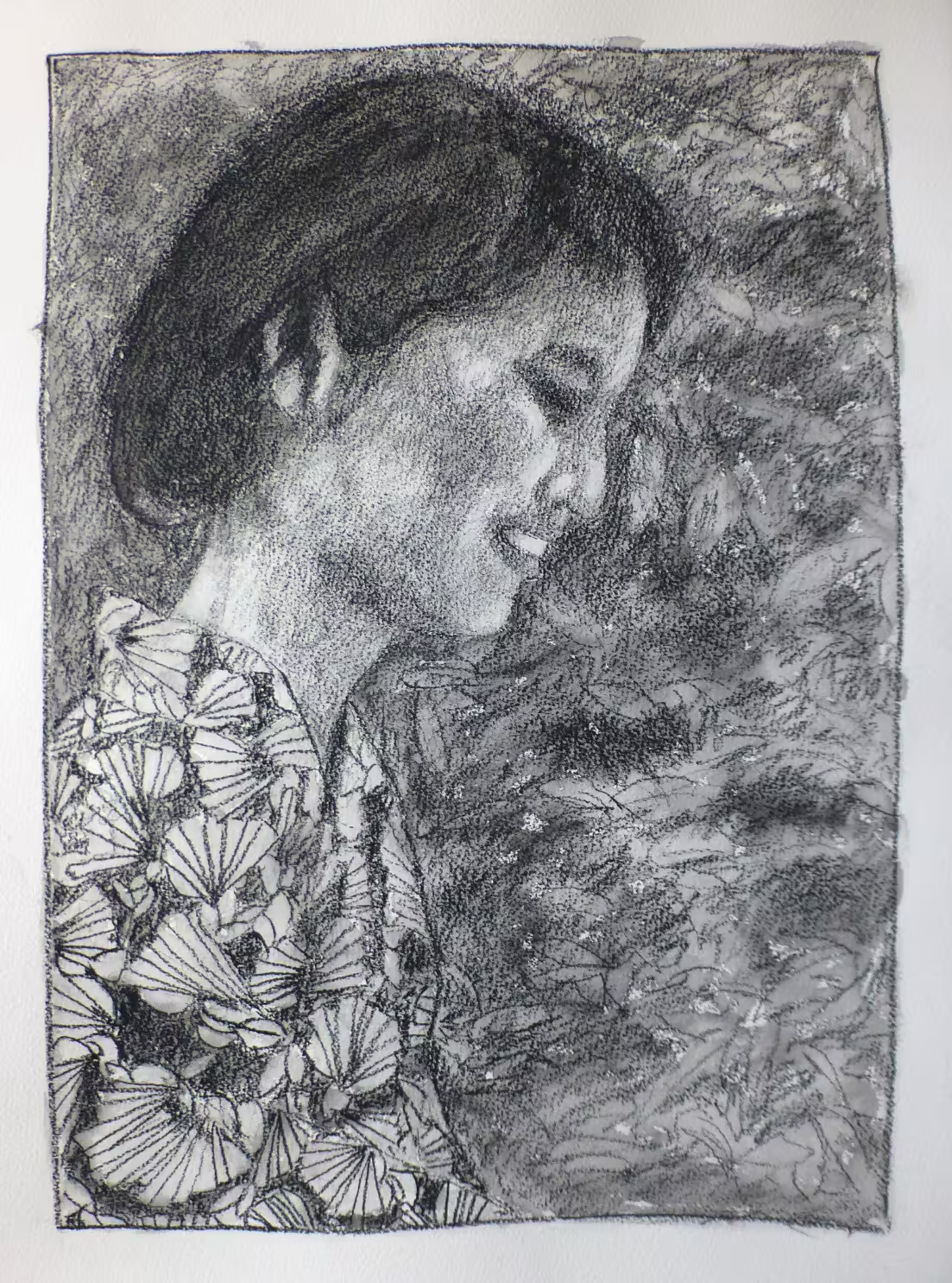
For the portrait of Sachi, I used essentially the same approach but I decided to add a touch of blue colour to the yukata and use it for highlights as well. I used a Derwent Inktense watercolour pencil for this. Compared to other watercolour pencils, these give a much more intense colour. I rendered the background differently, more abstracted.
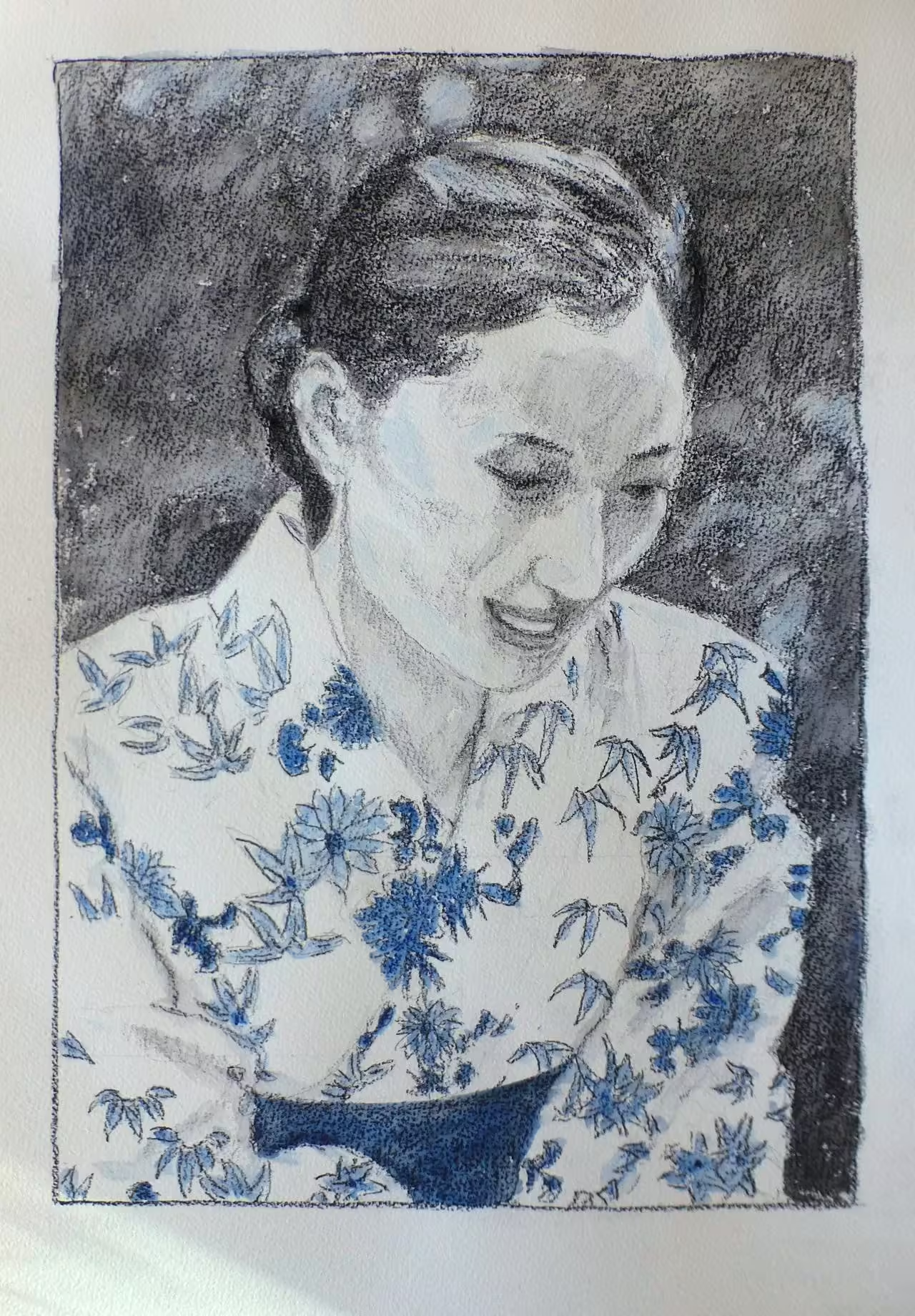
For the portrait of Suzu, I used pale pink and blue for the pattern of the yukata, and a slightly more magenta-like colour for the obi (sash), for highlights on the face and for the hairband.
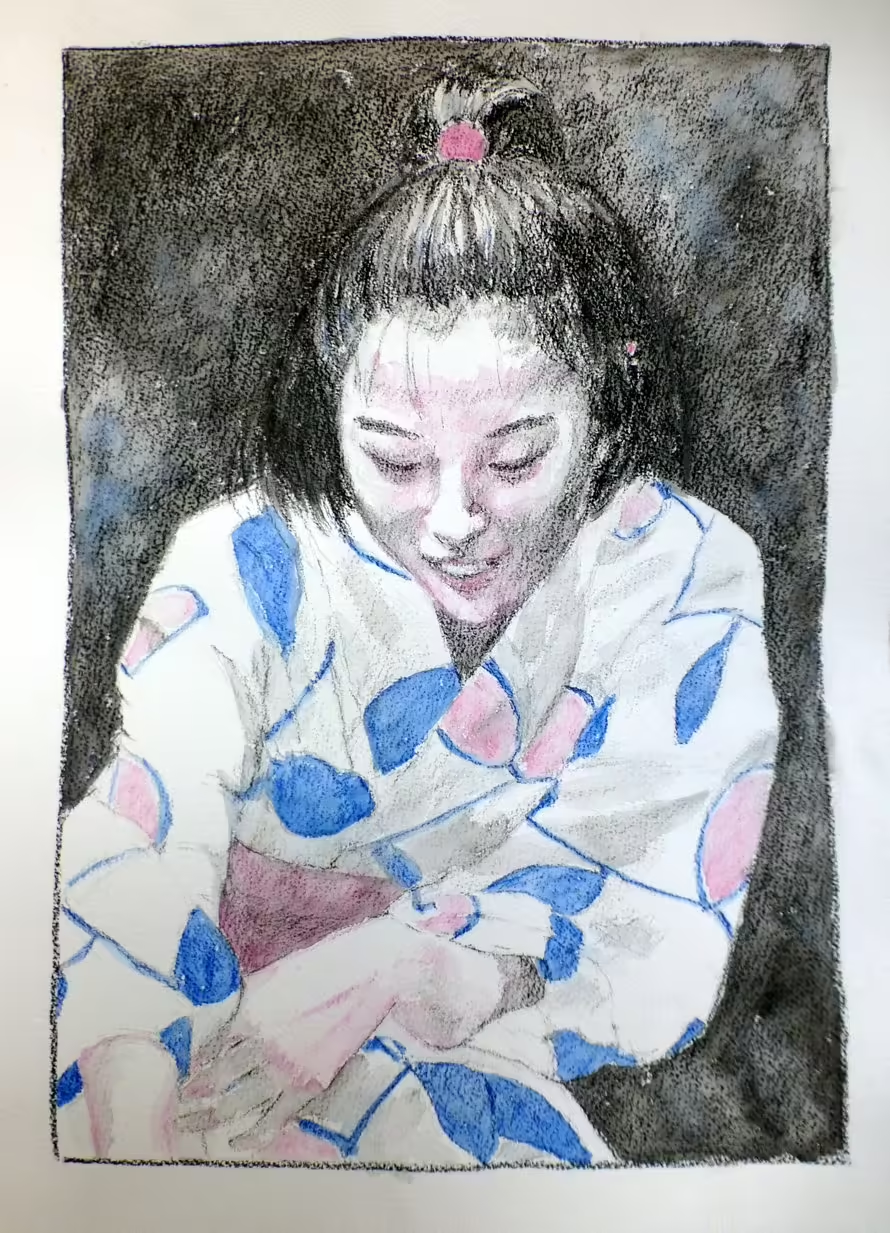
The final portrait was that of Chika, and it was a bit more challenging because it is very dark and also more cropped than I wanted it for my composition, so I had to extend the right part of it. I again used the same blue with just a few accents of the pink. It is the most abstracted of the four portraits.
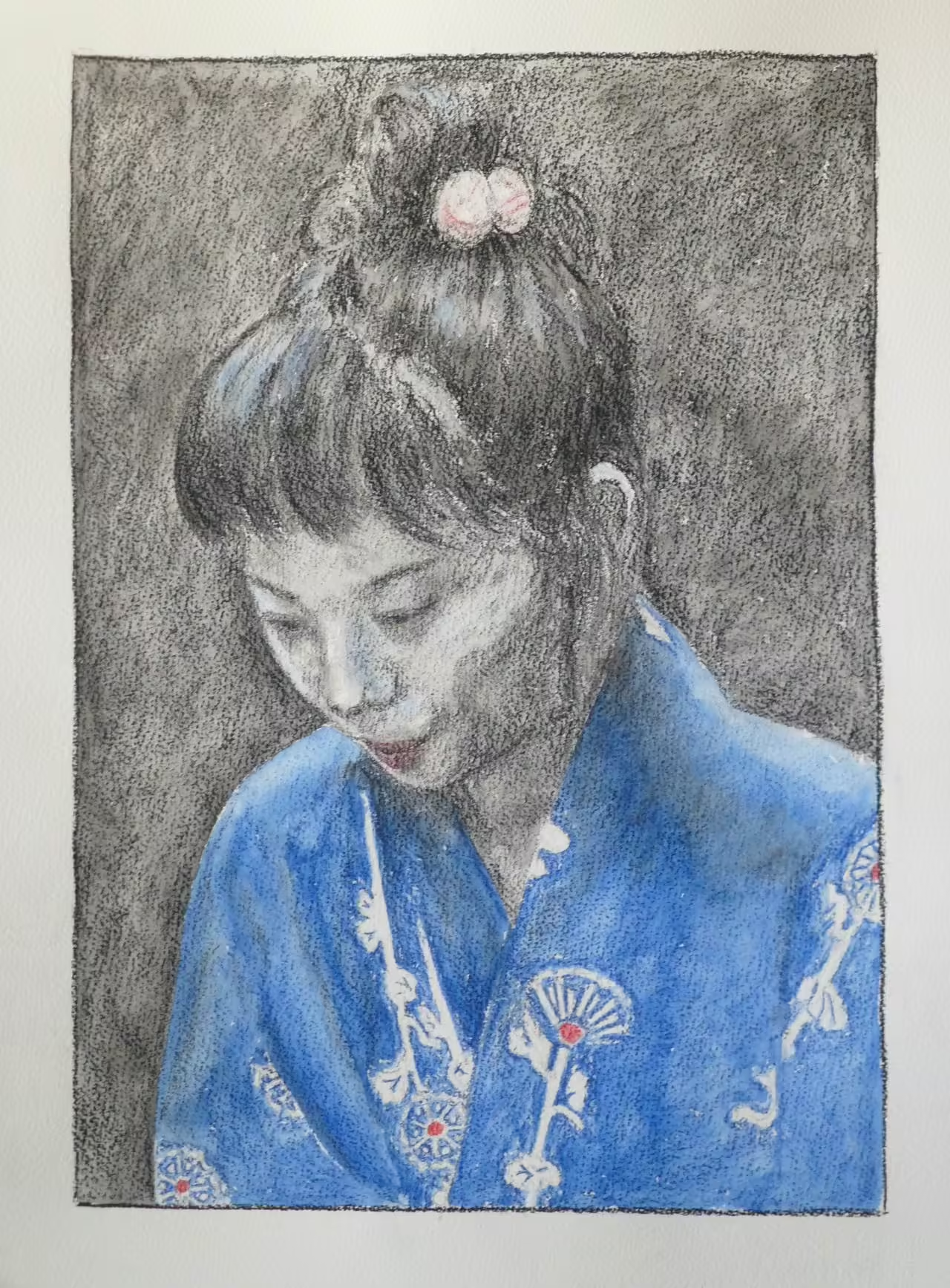
When these three portraits were done, I was no longer satisfied with the first one of Yoshino so I redid it. The composition is different, with the figure much larger, and I changed the position of the torso so that more of the yukata is visible. I used the same Derwent Inktense blue as for the other portraits on the yukata, and the same style of background treatment.
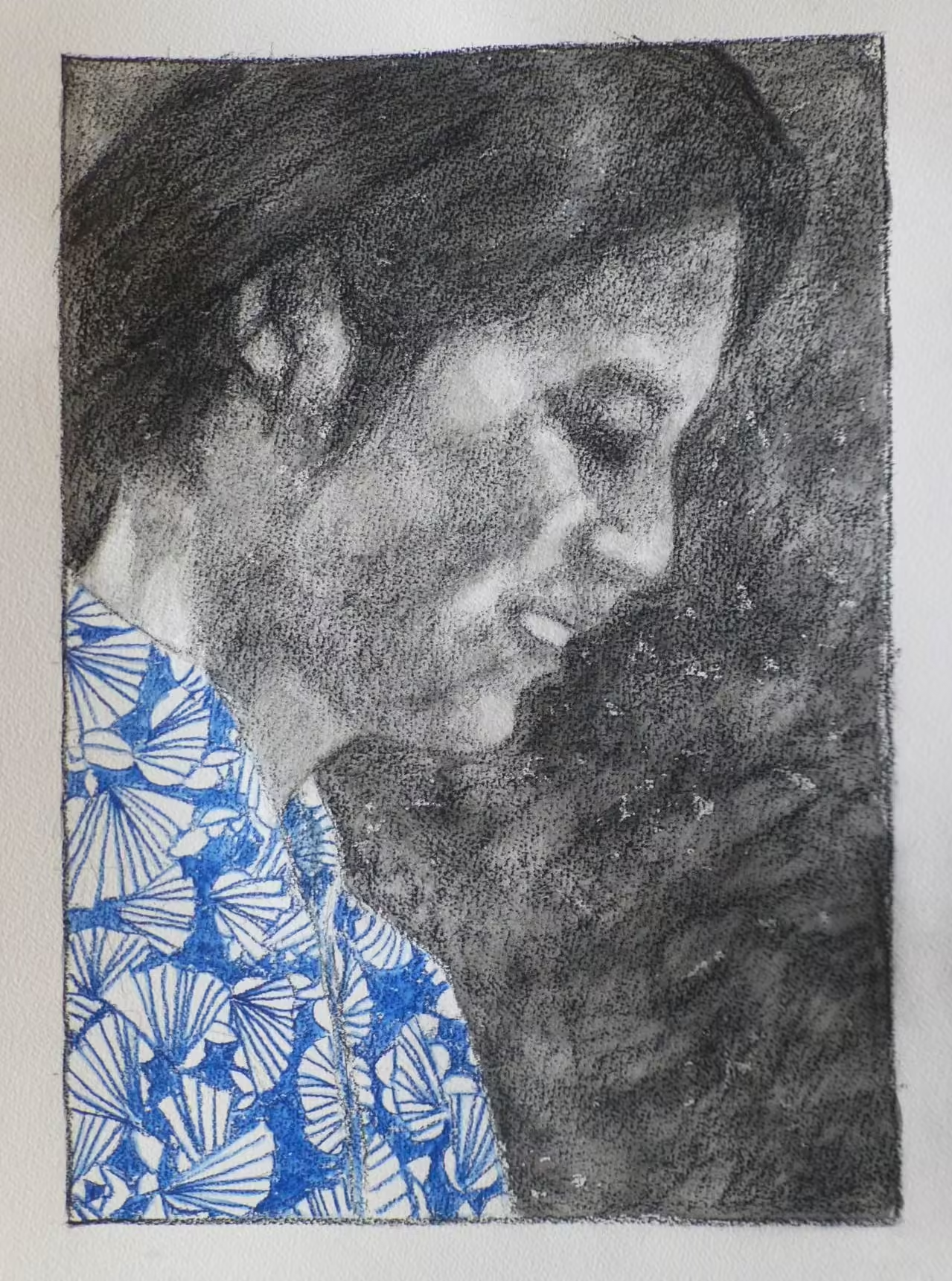
References
- [1] Offical web page of the manga Umimachi diary (in Japanese)
- [2] Japanese Fireworks (Hanabi): The Ephemeral Nature and Symbolism”, Damien Liu-Brennan, Mio Bryce, The International Journal of the Arts in Society, Volume 4, Number 5, 2010
